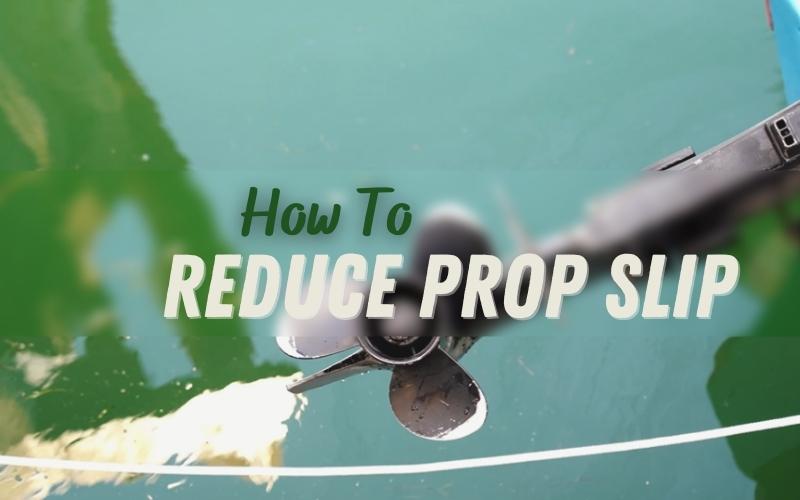About to start a fun day on your boat but then noticed that your prop slip is extended. That could ruin your whole mood. But you can easily reduce it and give a headstart to your eventful day.
So, how to reduce the prop slip?
First of all, you’ll need a correct setback. Then you have to trim the prop. After that, you should be checking if you’ve spun the hub or the coupler. Finally, you need to fix the slippage along with the diameter.
This was just the tip of the iceberg. There’s more in detail you must know before fixing this. We have got the entire guide in steps for you.
Sounds like what you’re looking for? Let’s get into it right away!
Table of Contents
ToggleCauses of Boat Prop Slip
Boat prop slip is a common problem that can occur in boats of any size. It is a situation where the propeller of a boat is spinning, but the boat is not moving forward as expected. This can be caused by several factors, including incorrect propeller size, boat design, water conditions, or improper maintenance. It is important to understand what causes boat prop slip in order to diagnose and fix the issue.
1. Under-propped Boat
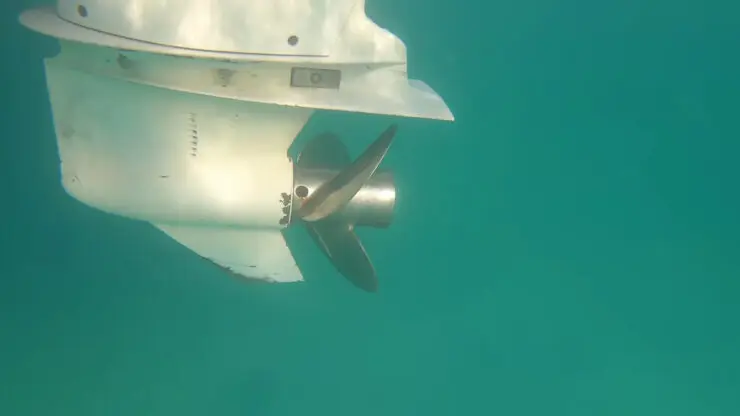
This occurs when the propeller on the boat is not providing enough thrust to provide the necessary performance and speed. This can be caused by a variety of reasons. The most common cause of boat prop slip is the wrong-size propeller being installed on the motor.
Improperly setting the engine trim can also be a factor, as well as worn or damaged propellers. Additionally, an incorrect propeller pitch can cause prop slip, as the wrong pitch can reduce the thrust of the propeller. Finally, the size of the motor can be a factor, as a motor that is too small for the boat can lead to a lack of power and prop slip.
2. Propeller Damage
Damage to the propeller can occur due to a number of issues, including contact with debris in the water, improper installation, and improper maintenance. When the propeller is damaged, the blades may become warped or broken, which can cause the propeller to slip and spin inefficiently when in use.
In addition, the propeller can also become bent or cracked, which can cause excessive vibration and poor performance. Additionally, the propeller may become clogged with debris, reducing the efficiency of the propeller and causing it to slip or spin inefficiently.
3. Improper Boat Loading
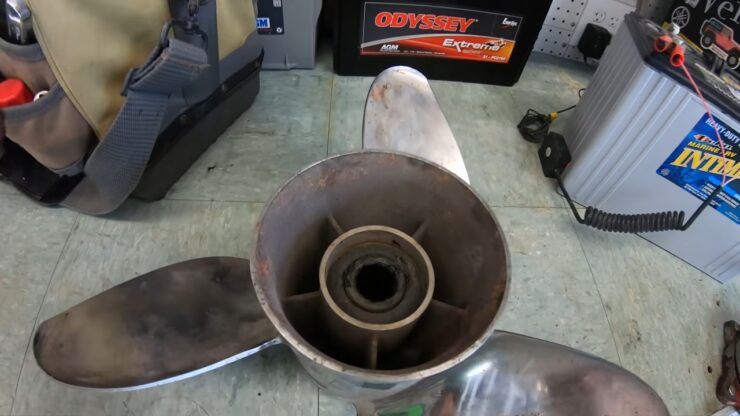
This occurs when the weight of the boat is not evenly distributed across the deck and hull. When the weight of the boat is not evenly distributed, it can cause the prop to slip, resulting in reduced performance and increased wear and tear on the engine.
Improper loading of gear, passengers, and supplies can also lead to prop slip. It is important to evenly distribute the weight of all items on board the boat to ensure that the prop is not slipping and the engine is not being overworked.
4. Improper Propeller Sizing
If a propeller is too large or too small, it can cause a decrease in the performance of the boat. An improperly sized propeller can cause the boat to slip, resulting in decreased acceleration, fuel efficiency, and top speed. One of the main causes of propeller slip is when the propeller is too large for the boat.
When the propeller is too large for the boat, the engine does not provide enough power to spin the propeller, resulting in the propeller slipping in the water. Another cause of propeller slip is when the propeller is too small for the boat.
When the propeller is too small for the boat, it can’t generate enough thrust to move the boat forward, resulting in the propeller slipping in the water. Poor propeller choice and selecting the wrong propeller size are the two main causes of propeller slip.
5. Cavitation
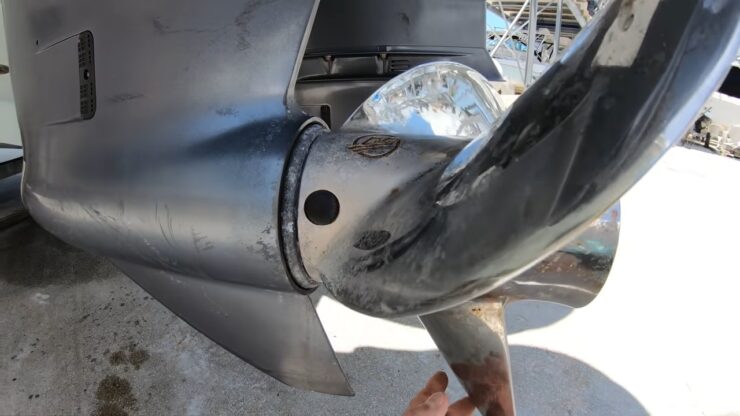
It occurs when water pressure around the prop decreases and causes a vacuum, which causes bubbles of air to form around the prop. These bubbles form a layer of air between the prop and the water, reducing the prop’s efficiency.
Cavitation is most common in high-speed boats or when the motor is running at full throttle. Cavitation can also be caused by water conditions such as shallow water, turbulence, or debris. It can also be caused by the prop being incorrectly sized or the wrong pitch, leading to excessive vibrations. When cavitation occurs, it is important to reduce speed and inspect the prop and surrounding water conditions to determine the cause.
6. Corrosion Buildup
When the propeller is exposed to the elements, the metal can become corroded and pitted, which can cause the propeller to slip. This corrosion also can lead to increased drag, which will reduce the efficiency of the propeller and can cause it to slip.
Additionally, corrosion of the propeller can cause the blades to become out of balance, leading to vibration and further slipping. This type of corrosion is generally caused by saltwater, but can also be caused by other environmental factors, such as acid rain, oil, and grease, or even bird droppings.
7. Excessive Boat Speed
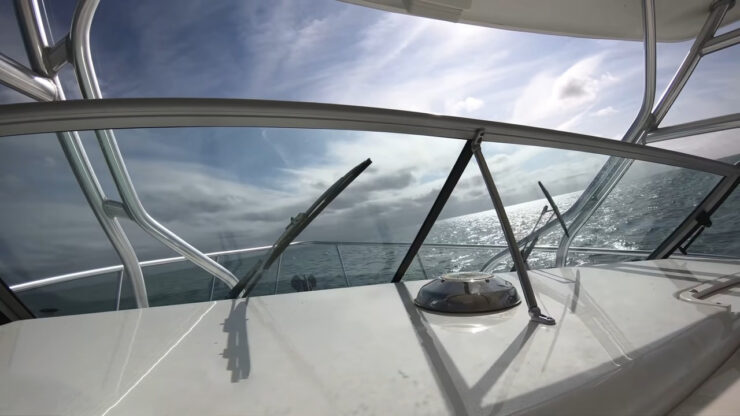
Excessive boat occurs when the boat is moving too quickly for the prop to efficiently propel the boat. When the boat is moving faster than the prop can rotate, the prop will slip, resulting in a loss of power and performance. The boat may also struggle to remain on a straight course and can cause inefficient fuel usage.
To prevent this, boat owners must be mindful of the boat’s speed and not exceed the recommended maximum speed. Additionally, they should be aware of the boat’s weight and the correct propeller size for the boat’s size, weight, and power. By avoiding excessive speeds and properly sizing the prop, boat owners can ensure optimal performance and fuel economy.
How To Calculate The Prop Slip?
If you don’t want your prop slip to extend every now and then, do the right calculations. You can easily calculate the prop slip while lubing the steering cable on the boat. You can also calculate it any other time.
A propeller for a boat has two fundamental dimensions. The first is diameter, and the second is pitch. These are normally expressed in inches and are always written as diameter x pitch.
A 14.5 x 19 propeller, for example, has a diameter of 14.5 inches and a pitch of 19 inches. Simply calculate the diameter of the prop with a measuring tape to determine its diameter.
On the other hand, propeller pitch is the distance the prop would go forward in one rotation. It’s like turning a screw into wood. The threads of a screw are equivalent to the blades on a propeller.
What Happens If The Prop Slip Is Extended?
If the prop slip is extended, the engine may run below its WOT range. This is known as lugging. This might put unnecessary strain on the engine and gearcase components.
So, moving the pitch up or down two inches will usually modify the WOT engine speed. It would also change the RPM by about 400. And if you fail to do it, the outboard motor might not get started.
How To Reduce The Prop Slip?
Reducing the prop slip might sound quite simple. But it isn’t that easy in other words. Because you need to go accordingly when you do it. So, the steps to reduce the prop slip are given below-
Step 1: Trim The Prop
First of all, you’ll need a correct setback, as well as some balance. Then trim the prop if it is not delivering all of its force in a forward direction. At the very least, you’ll lose the vector, as well as the ability to drive the stern down.
Step 2: Check The Speed Readings
Check to see if you’ve spun the hub or the coupler. They normally all burn up at the same time. Make sure the water flow to the prop isn’t obstructed. Then double-check your tach and speed readings.
Don’t get confused with the speed readings as some people confuse it with the speedometer. Some people also confuse it with the Cmap or Navionics.
Step 3: The Finishing
The tach will display falsely high rpm numbers in this case. In addition, the boat’s horsepower will be reduced, resulting in a slower top speed. Different pitches won’t have much of an impact on slippage.
More blades or a larger diameter can help, especially if the X dimension is larger. However, your slippage should be less than 15%. So, at 40%, you’re considerably off the mark. And there’s more to it than a 1″ pitch or a 1/2″ diameter difference.
So, you need to make the calculations first. Then you need to follow the instructions as per given above to reduce the prop slip.
FAQs
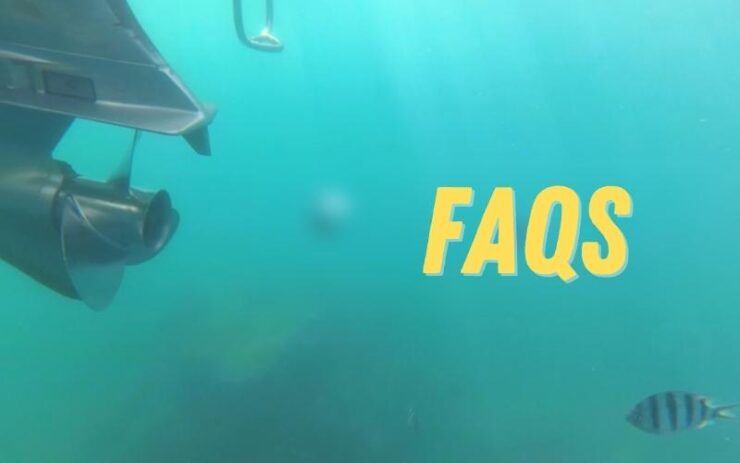
1. What is the average prop slip?
The majority of setups have a 5-20% slip rate. And, of course, each boat is unique. However, you may notice that the percentage displayed is more than 20. In that situation, switching to a different propeller, altering the drive height, and so on can usually help.
2. Why does the prop slip?
Prop slip is caused by a variety of circumstances. This covers the propeller’s actual pitch as well as its current state. It also includes the hull’s design as well as the condition of the craft’s bottom. Additional weight on the vessel, as well as weight distribution, are also incorporated. Finally, the engine height, engine trim angle, setback, and jack plate are all included.
3. How to identify the bad boat prop?
First and foremost, there would be too much pitch. On the other side, it could be that it lacks pitch. When you wish to travel quicker, you’ll run out of gas. The amount of fuel consumed would be higher than usual. There are also some other signs and symptoms. Keep one thing in mind. The symptoms may differ slightly from boat to boat.
4. Is a prop slip considered good for the boat?
It sounds like an awful situation. When it occurs in the correct percentage, though, it’s actually a beneficial thing. Prop slip is the discrepancy between real and theoretical forward travel in basic terms. It’s caused by the angle of attack of a propeller. Too much prop slip results in poor performance and poor fuel economy.
5. Is it better to have a 3-prop blade or 4 prop blade?
A three-blade propeller is typically used for high-speed applications. A four-blade propeller, on the other hand, delivers maximum thrust and smooth cruising. Four blades, on the other hand, have their unique set of characteristics. At the stern, they frequently give additional lift. As a result, the hull will accelerate.
The Final Words
Now you know how to reduce the prop slip! We hope our information was quite helpful for you to put into the implementation.
We wish you the best with your sailing tasks. Good luck!
I’m Liam Jackson, the proud owner and driving force behind KayakPaddling.net. Born somewhere in the expansive beauty of the United States, I’ve nurtured a lifelong passion for kayaking and fishing that has led me to explore the far corners of our nation’s waterways.
Related Posts:
- 16 Best Kayak For Beginners 2024 - Kayaking Adventure Gear
- 12 Best Beach Wagons & Carts 2024 - For All-Terrain
- How to Stay Safe on Slow Moving Waters When Paddle Boarding?
- 10 Best Fish Finders Under $200 2024 - Top Affordable Picks
- 20 Best Inshore Spinning Reels 2024 - Capturing All…
- Bad Prop Hub Symptoms - with 4 Troubleshooting Tips

